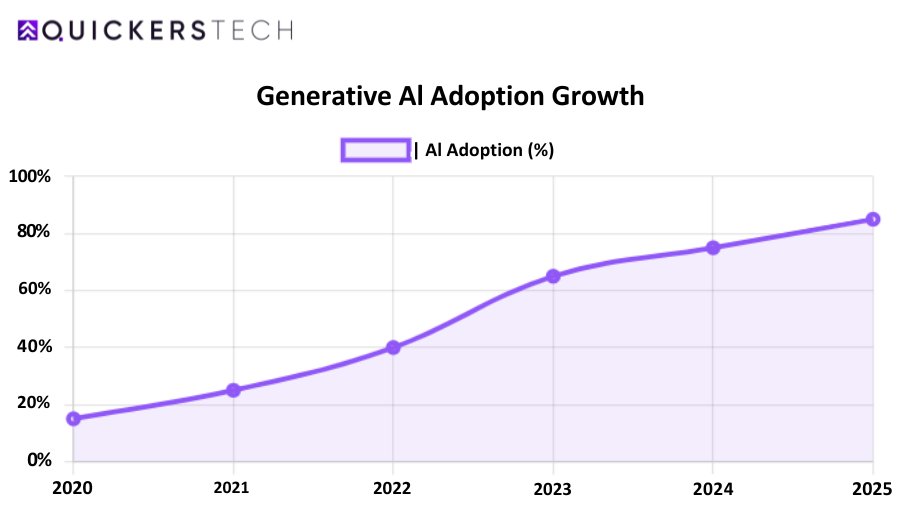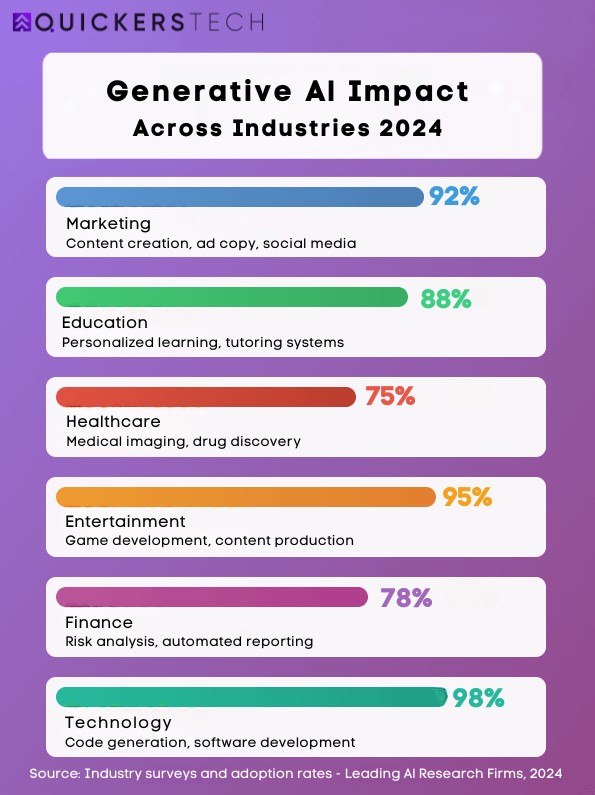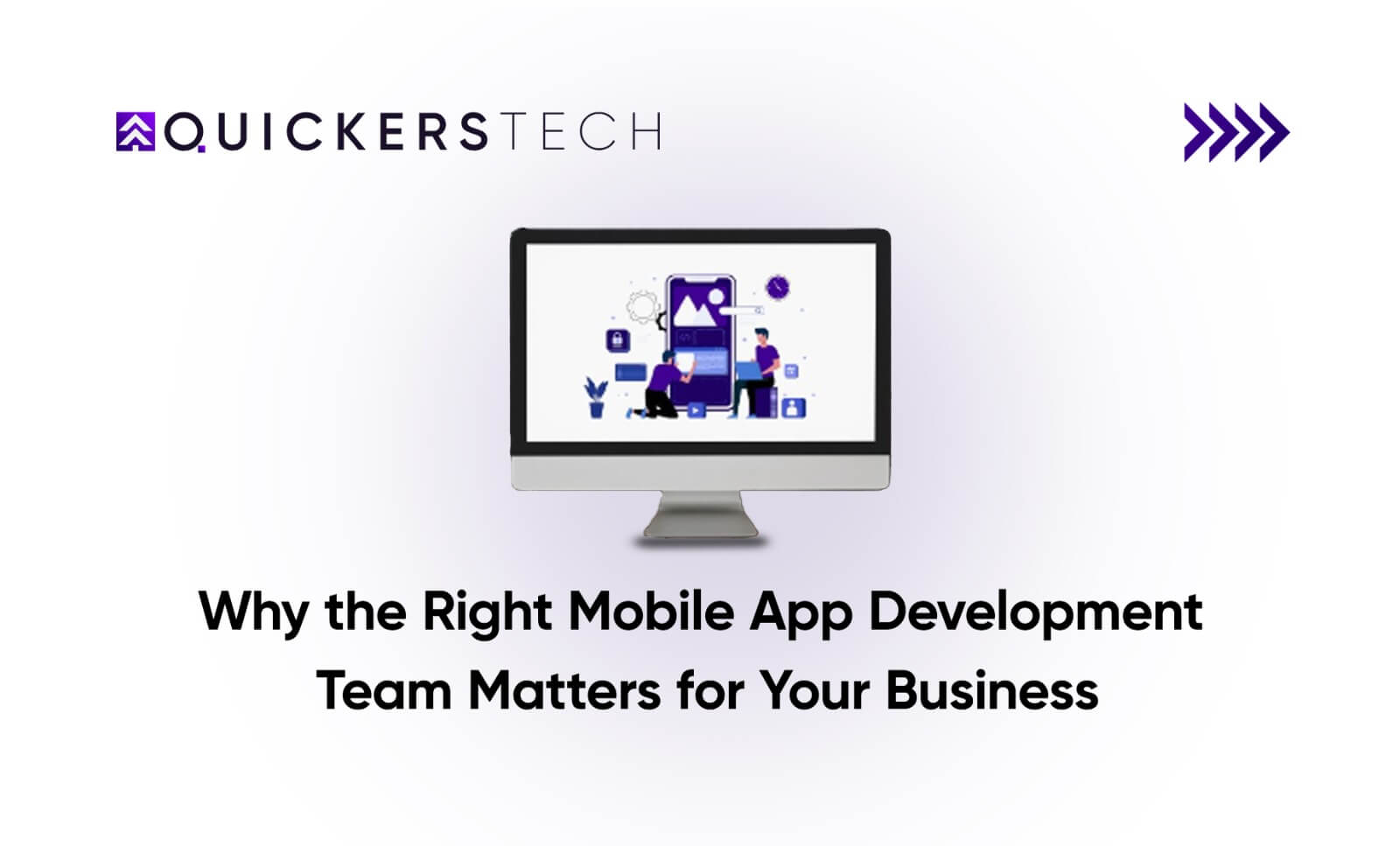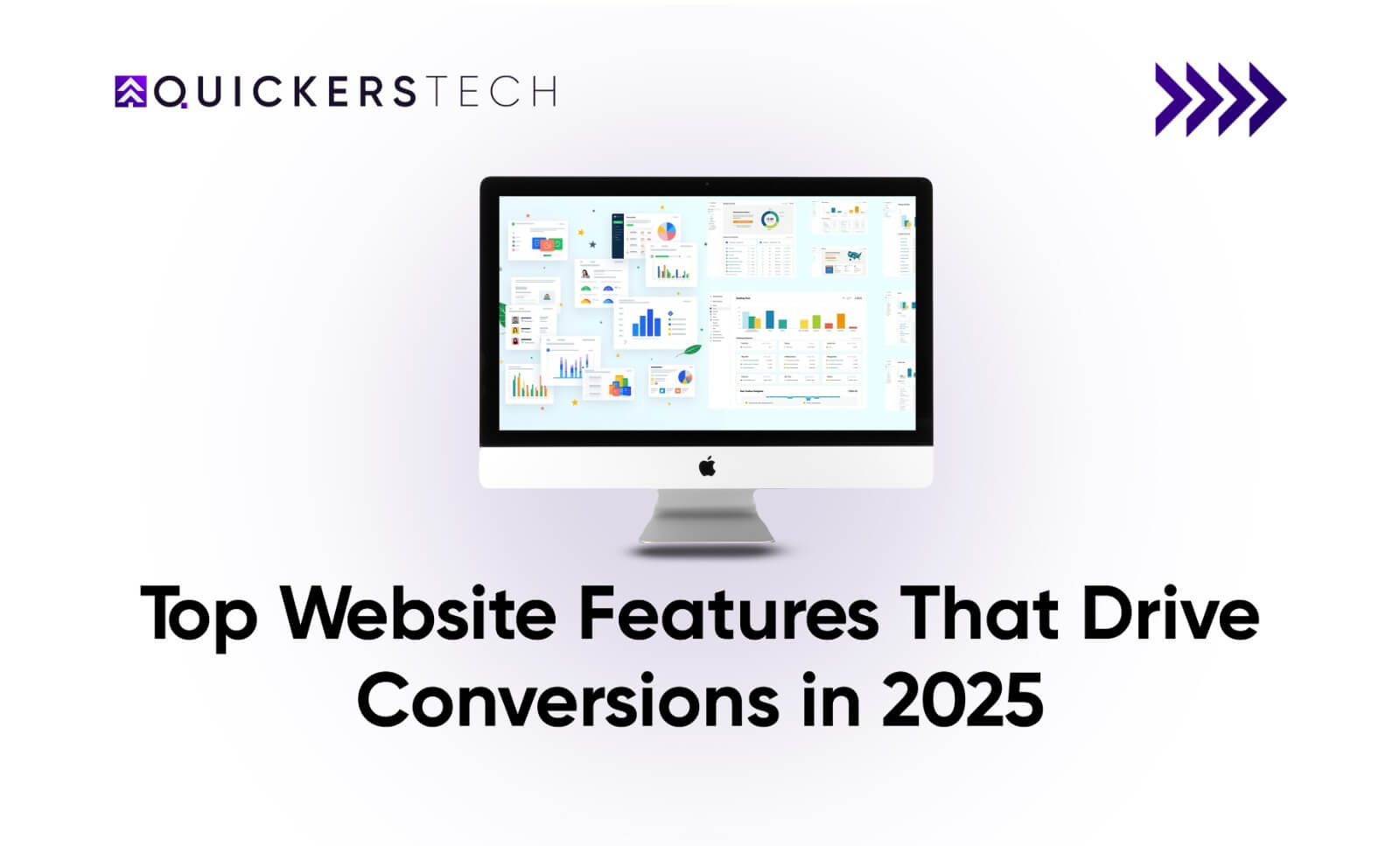Contents
- 1 What Makes Generative AI Different?
- 2 What is the Main Goal of Generative AI?
- 3 What is the Key Feature of Generative AI?
- 4 The Key Feature That Changes Everything
- 5 What is the Difference Between Generative and Predictive AI?
- 6 The Data Universe of Generative AI
- 7 What Are the Types of Data in Generative AI?
- 8 What Challenge Does Generative AI Face concerning Data?
- 9 What is One Challenge Related to the Interpretability of Generative AI Models?
- 10 Generative AI in Your Daily Life
- 11 Repetition with Purpose: What is the Key Feature of Generative AI?
- 12 Final Thoughts
Imagine having a creative partner that never sleeps, never runs out of ideas, and can help you write, design, code, and create in ways you never thought possible. That’s the reality of generative AI today.
Generative AI is changing our world. From ChatGPT writing emails to DALL-E making amazing artwork from simple words, it has become a key technology. But if you’re new to this fascinating world, you’re probably wondering: what is the key feature of generative AI that makes it so powerful?
This guide explores generative AI. It covers what it is, how it works, where it shines, and the challenges ahead. Whether you’re a curious learner or a business pro, you’ll gain a clear understanding of this technology’s amazing potential and its real-world limits.

Source: AI adoption among organizations worldwide 2017-2024
What Makes Generative AI Different?
What is the key feature of generative AI? It represents a fundamental shift in how we think about artificial intelligence. Generative AI stands out from traditional AI in remarkable ways. While regular AI looks at data and makes predictions, generative AI can create entirely new content from nothing.
Think of it like this: a library catalog helps you find books that are already there. A novelist, on the other hand, creates new stories from scratch. Generative AI is the novelist of the digital world.
The key feature of generative AI isn’t just analysis or prediction; it’s pure creation. This distinguishes it from every other form of artificial intelligence we’ve seen before, offering automated creativity that produces original content on demand.
What is the Main Goal of Generative AI?
Generative AI represents a fundamental shift in how we think about artificial intelligence. Generative AI stands out from traditional AI. While regular AI looks at data and makes predictions, generative AI can create new content from nothing.
Think of it like this: a library catalog helps you find books that are already there. A novelist, on the other hand, creates new stories from scratch. Generative AI is the novelist of the digital world.
This technology can generate:
Text content like articles, stories, emails, and even poetry
Visual masterpieces including photographs, illustrations, and logos
Audio experiences from music compositions to voice narrations
Code solutions for software development and automation
Video content for marketing, education, and entertainment
3D models for gaming, architecture, and product design
Complex simulations for research and training
What is the Key Feature of Generative AI?
Generative AI has one main goal: to make creativity accessible and boost human potential.
Every generative AI system is designed to:
- Accelerate creative workflows by turning hours of work into minutes
- Eliminate repetitive tasks that drain human creativity
- Augment human imagination with AI-powered brainstorming
- Personalize experiences based on individual needs and preferences
The magic happens through sophisticated pattern recognition combined with probabilistic modeling. These systems don’t just copy what’s out there. They synthesize, remix, and create truly new ideas. This process resembles human creativity but happens at superhuman speed.

The Key Feature That Changes Everything
Here’s the answer you’ve been waiting for: The key feature of generative AI is its amazing ability to create original, relevant content. It mimics human creativity and uses deep learning algorithms trained on large, diverse datasets.
Let’s break down this game-changing capability:
The Learning Process
Massive Data Ingestion: The AI consumes enormous amounts of text, images, audio, or code
Pattern Recognition: It identifies styles, structures, relationships, and nuances in the data
Creative Synthesis: It takes what it has learned and creates new content. This content follows similar patterns but is not a direct copy.
What Makes It Extraordinary
This isn’t just sophisticated copy-pasting. When you ask generative AI to “write a bedtime story about a robot learning to paint,” it doesn’t search for other tales. Instead, it:
Understands the concept of bedtime stories (gentle, calming, with a lesson)
Knows about robots (mechanical, logical, learning human emotions)
Comprehends painting (artistic expression, creativity, beauty)
Creates a completely original story that weaves these elements together
This is automated originality, the ability to be genuinely creative on demand.
What is the Difference Between Generative and Predictive AI?
Many people confuse these two types of AI, but they serve completely different purposes:
| Aspect | Generative AI | Predictive AI |
|---|---|---|
| Primary Function | Creates new content and experiences | Forecasts outcomes and patterns |
| Output Type | Original text, images, audio, video | Predictions, recommendations, classifications |
| Creative Nature | Highly creative and imaginative | Analytical and data-driven |
| Use Cases | Content creation, design, storytelling | Weather forecasting, stock analysis, medical diagnosis |
| Mindset | “What can I create?” | “What will happen next?” |
So, what is the key feature of generative AI compared to predictive AI? It’s all about its ability to create rather than just calculate.
The Data Universe of Generative AI
Generative AI’s versatility comes from its ability to work with virtually any type of data:
Textual Data
Literature, news articles, academic papers
Conversations, social media posts, technical documentation
Code repositories, scripts, and programming languages
Visual Data
Photographs, paintings, sketches, and digital art
User interface designs, logos, and brand materials
Medical imagery, satellite photos, and scientific visualizations
Audio Data
Musical compositions across all genres
Human speech in multiple languages and accents
Natural sounds, sound effects, and ambient noise
Video Data
Movies, documentaries, and educational content
Advertisements, tutorials, and social media clips
Animation, live-action, and mixed media productions
Structured Data
Spreadsheets, databases, and financial reports
Scientific measurements and experimental results
User behavior analytics and business metrics
The most advanced systems today are multimodal. This means they can handle different data types at the same time. Multimodal generative AI can do amazing things. It can turn text into images, change speech into video, or create music that fits a photo’s mood.
What Are the Types of Data in Generative AI?
Generative AI works across a wide variety of data types. These include:
Textual data – books, articles, conversations, code
Visual data – photos, paintings, logos, UI designs
Audio data – voices, instruments, natural sounds
Video data – animations, interviews, advertisements
Tabular/structured data – spreadsheets, metrics, reports
Each type requires different model architectures and processing techniques. Advanced models today can even work across multiple data types at once (known as multimodal models), enabling things like describing images using text or turning speech into video.
What Challenge Does Generative AI Face concerning Data?
Generative AI has amazing abilities, but it also faces big challenges. These challenges include data quality and ethics.
The Bias Problem
When training data has old biases or stereotypes, AI systems can spread and worsen these problems. For example, if an AI mainly learns from pictures of male engineers, it may always show male figures when creating images of engineers.
Representation Gaps
AI systems trained on non-diverse data may not serve underrepresented communities well. This can lead to systems that work well for some groups but fail others entirely.
Information Staleness
Many AI models are trained on static datasets that become outdated quickly. In fast-changing areas like technology or news, this can cause outdated or wrong results.
The Overfitting Trap
When models memorise their training data too well, they lose creativity. They then create content that resembles existing work too closely. This raises concerns about originality and copyright.
To tackle these challenges, we should:
Focus on data curation.
Involve diverse teams.
Update models regularly.
Set up strong evaluation frameworks.
What is One Challenge Related to the Interpretability of Generative AI Models?
A major challenge for adopting generative AI is the interpretability problem.
Modern generative AI works differently from traditional rule-based systems. While you can trace every decision in those systems, generative AI acts more like a human brain. It’s very capable, but it doesn’t always explain its reasoning.
Critical Questions Without Easy Answers
“Why did the AI choose this particular word or phrase?”
“What specific training data influenced this output?”
“How confident is the AI in this response?”
“Can we trust this information for important decisions?”
Real-World Implications
This lack of transparency becomes particularly problematic in:
Healthcare: When AI assists in diagnosis or treatment recommendations
Legal: When AI helps with contract analysis or legal research
Finance: When AI influences investment or lending decisions
Education: When AI provides learning content or assessments
Many organizations invest in generative AI consulting services. This helps them make sure their AI projects are clear, responsible, and meet their needs and regulations.
Generative AI in Your Daily Life
You’re probably already interacting with generative AI more than you realize:
Content Creation
Email drafting assistants that help you write professional messages
Blog writing tools that help create engaging articles
Social media caption generators for businesses
Customer Experience
Intelligent chatbots that provide personalized customer support
Product recommendation systems that create custom shopping experiences
Virtual assistants that help with scheduling and planning
Creative Industries
Design tools that generate logos, layouts, and visual assets
Music production software that creates backing tracks and melodies
Video editing tools that generate transitions and effects
Business Operations
Automated report generation for data analysis
Personalized learning platforms for employee training
Marketing copy generation for campaigns and advertisements
ChatGPT, Claude, Microsoft Copilot, and Google Bard are popular platforms now used by millions of people around the world.
Repetition with Purpose: What is the Key Feature of Generative AI?
Let’s revisit our main question: What is the key feature of generative AI?
It’s the unique ability to create original content that fits well, by learning and copying how humans think and create, all on a large scale.
This feature is revolutionary because it:
- Democratizes creativity by making advanced creative tools accessible to everyone.
- Accelerates innovation by reducing the time from idea to execution.
- Personalizes at scale by creating custom content for individual users.
- Breaks down barriers between technical and creative disciplines.
- Continuously improves by learning from new data and feedback.
Final Thoughts
Generative AI isn’t just a tech upgrade—it’s a big change in how we view working with machines. We’re moving from a world where we consume content to one where we co-create with intelligent systems.
The Path Forward
The future belongs to those who can:
Understand the capabilities and limitations of generative AI
Use these tools responsibly with awareness of ethical implications
Combine human creativity with AI efficiency to achieve unprecedented results
Stay informed about evolving best practices and technological developments
Your Next Steps
Whether you want to boost your productivity, change your business, or learn about new technology, remember this: generative AI isn’t here to replace human creativity; it’s here to enhance it.
Now that you understand what the key feature of generative AI is, its ability to generate original, human-like content, you can see why this technology is so transformative. This core capability of automated creativity is what makes AI such a powerful ally in your creative journey.
The question isn’t whether AI will change how we create and work. The question is: how will you harness this transformative technology to unlock your full potential?
Understanding what is the key feature of generative AI is just the beginning. The real magic happens when you combine this knowledge with your unique human insights, creativity, and vision.
Ready to explore how generative AI can transform your specific use case? The future of content creation isn’t just about consuming. It’s also about working together with the best creative tools ever made. When you truly grasp what is the key feature of generative AI, you’ll discover endless possibilities for innovation and growth.













